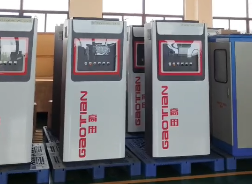Working principle of fire pump automatic inspection system
The working principle of the automatic inspection system of fire pumps can be summarized as follows:
The automatic inspection system of fire pumps detects and monitors fire pumps in a non-operating state in an automated way to ensure that they can be quickly and reliably started and put into use in an emergency. This system is mainly composed of sensors, main control systems, inspection control devices and fire pumps themselves.

Data acquisition and transmission: The system collects various operating parameters of the fire pumps in real time through sensors installed on the fire pumps, such as motor current, voltage, speed, water pressure, etc., and transmits these data to the main control system. These sensors play the role of "eyes" and can monitor the status of the fire pumps in real time.
Data analysis and processing: After receiving the data transmitted by the sensors, the main control system will use the built-in analysis algorithm to process these data to determine whether there are any abnormal conditions in the fire pumps, such as motor overheating, insufficient water pressure, abnormal current, etc. This process is automatic and does not require human intervention.
Automatic inspection and alarm: Within the set inspection cycle, the main control system will automatically start the inspection program and perform low-speed and pressure-free inspections on the fire pumps. During the inspection process, if an abnormality is found in the fire pump, the system will immediately sound an alarm and send the alarm information to relevant personnel through the preset communication interface for timely processing.
Remote monitoring and manual inspection: In addition, the fire pump automatic inspection system is also equipped with a variety of communication interfaces, such as RS485, which can realize remote fire monitoring. This allows relevant personnel to understand the status of the fire pump in real time at the remote monitoring center and conduct manual inspections or adjust inspection parameters when necessary.
Energy saving and high efficiency: During the inspection process, the fire pump runs at a low speed and the driving power is very small, about one percent of the rated power of the pump motor, so the energy saving effect is obvious. At the same time, since the system does not generate water pressure during the inspection, it will not cause pressure fluctuations in the fire water supply network.




